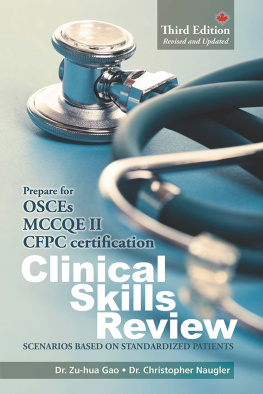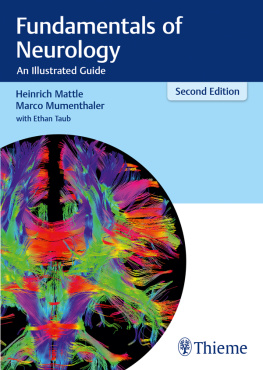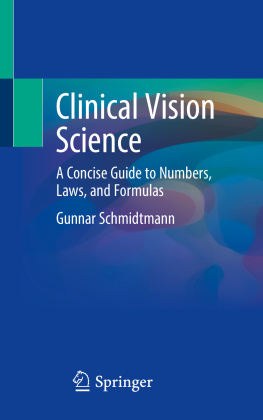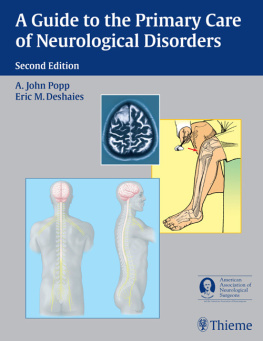Neurological Examination Made Easy
Fourth Edition
Geraint Fuller, MD FRCP
Consultant Neurologist, Gloucester Royal Hospital, Gloucester, UK
Churchill Livingstone
Front matter
NEUROLOGICAL EXAMINATION
MADE EASY
Commissioning Editors: Michael Parkinson/Timothy Horne
Development Editor: Clive Hewat
Project Manager: Frances Affleck
Designer: Erik Bigland
Illustrators: Matthew Gale, John Marshall
Neurological Examination
Made Easy
GERAINT FULLER MD FRCP
Consultant Neurologist, Gloucester Royal Hospital, Gloucester, UK
FOURTH EDITION

Edinburgh London New York Oxford Philadelphia St Louis Sydney Toronto 2008
Copyright

An imprint of Elsevier Limited
2008, Elsevier Limited. All rights reserved.
The right of Geraint Fuller to be identified as author of this work has been asserted by him in accordance with the Copyright, Designs and Patents Act 1988
.
First Edition 1993
Second Edition 1999
Third Edition 2004
Fourth Edition 2008
Standard Edition ISBN 978 0 443 06964 2
International Edition ISBN 978 0 443 06946 8
British Library Cataloguing in Publication Data
A catalogue record for this book is available from the British Library
Library of Congress Cataloging in Publication Data
A catalog record for this book is available from the Library of Congress
Notice
Medical knowledge is constantly changing. Standard safety precautions must be followed, but as new research and clinical experience broaden our knowledge, changes in treatment and drug therapy may become necessary or appropriate. Readers are advised to check the most current product information provided by the manufacturer of each drug to be administered to verify the recommended dose, the method and duration of administration, and contraindications. It is the responsibility of the practitioner, relying on experience and knowledge of the patient, to determine dosages and the best treatment for each individual patient. Neither the Publisher nor the author assumes any liability for any injury and/or damage to persons or property arising from this publication. The Publisher


Printed in China 
Acknowledgements
I would like to thank all my teachers, particularly Dr Roberto Guiloff, who introduced me to neurology. I am grateful to the many medical students at Charing Cross and Westminster Medical School who have acted as guinea pigs in the preparation of the previous editions of this book and to the colleagues who have kindly commented on the text. I am also most appreciative of all the constructive comments made about the earlier editions of the book by students, mainly from Bristol University, junior doctors and colleagues, and particularly the neurologists involved in its translation.
In learning to be a clinical neurologist and in writing this book I am indebted to a wide range of textbooks and scientific papers that are too many to mention.
I have been grateful for the continued patience and understanding of my editors, Wendy Lee and Clive Hewat.
This book is dedicated to Cherith.
Introduction
Many medical students and junior doctors think that neurological examination is extremely complicated and difficult.
This is because:
they find it hard to remember what to do
they are not sure what they are looking for
they do not know how to describe what they find.
The aim of this book is to provide a simple framework to allow a medical student or junior doctor to perform a straightforward neurological examination. It explains what to do and points out common problems and mistakes. This book cannot replace conventional bedside teaching and clinical experience.
Inevitably, when trying to simplify the range of neurological findings and their interpretation, not all possible situations can be anticipated. This book has been designed to try to accommodate most common situations and tries to warn of common pitfalls; there will be some occasions where incorrect conclusions will be reached.
How to use this book
This book concentrates on how to perform the neurological part of a physical examination. Each chapter starts with a brief background and relevant information. This is followed by a section telling you What to do, both in a straightforward case and in the presence of abnormalities. The abnormalities that can be found are then described in the What you find section, and finally the What it means section provides an interpretation of the findings and suggests potential pathologies.
It is important to understand that the neurological examination can be used as:
a screening test
an investigative tool.
It is used as a screening test when you examine a patient in whom you expect to find no neurological abnormalities: for example, a patient with a non-neurological disease or a patient with a neurological illness not normally associated with physical abnormalities, such as migraine or epilepsy. Neurological examination is used as an investigative tool in patients when a neurological abnormality is found on screening, or when an abnormality can be expected from the history. The aim of examination is to determine whether there is an abnormality, determining its nature and extent and seeking associated abnormalities.
There is no ideal neurological examination technique. The methods of neurological examination have evolved gradually. There are conventional ways to perform an examination, a conventional order of examination and conventional ways to elicit particular signs. Most neurologists have developed their own system for examination, a variation on the conventional techniques. In this book one such variation is presented and aims to provide a skeleton for students to flesh out with their own personal variations.
In this book each part of the examination is dealt with separately. This is to allow description and understanding of abnormalities in each part of the examination. However, these parts need to be considered together in evaluating a patient as a whole. Thus the findings in total need to be synthesised.
The synthesis of the examination findings should be as described below.
Anatomical
Can the findings be explained by:
one lesion
multiple lesions
a diffuse process?
)?
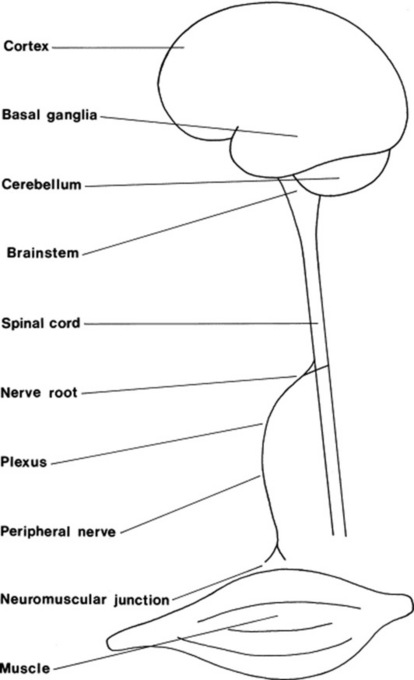
Figure 0.1 The levels of the nervous system
Syndromal
Do the clinical findings combine to form a recognisable clinical syndrome: for example, parkinsonism, motor neurone disease, multiple sclerosis?
Aetiological


